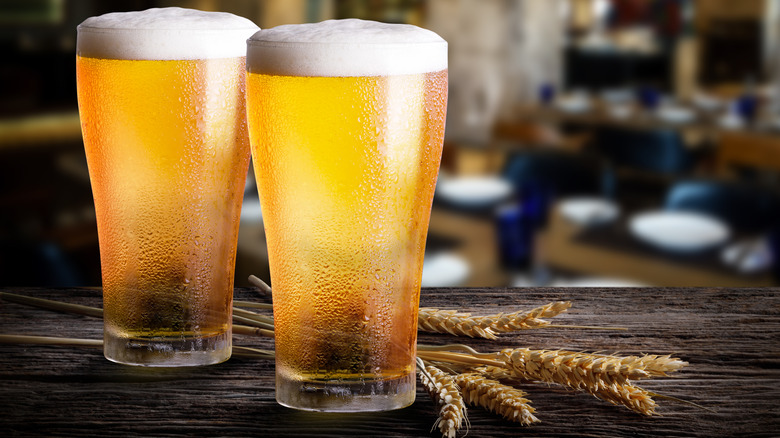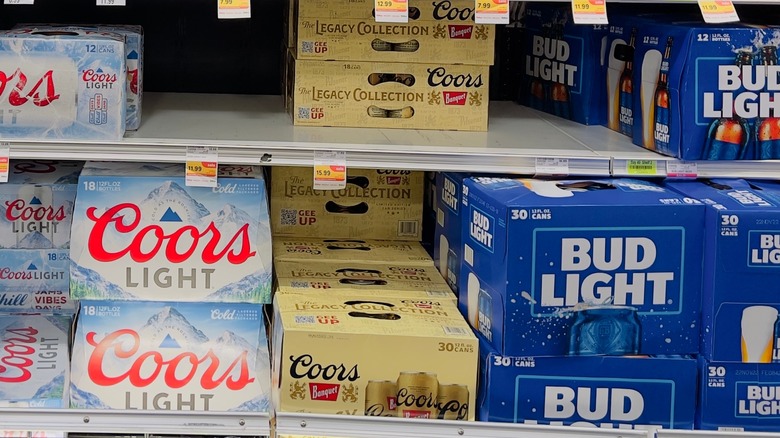Coors Light VS Bud Light: Everything You Need To Know
The craft beer scene is undeniably a part of American drinking culture, now comprising one-quarter of the money spent on beer in this country (per Brewers Association). But that interest in unique beers from a proliferation of local breweries has not supplanted the more everyday aspects of beer consumption in the United States. For example, according to VinePair, statistics from 2018 showed that two brands of mass-produced light beer — Bud Light and Coors Light — accounted for more than 40 million barrels of U.S. beer sales, with Bud Light leading the way at 29.4 million barrels and Coors Light selling 14.9 million barrels. Miller Lite claimed third place at 12.6 million barrels.
Among the two leading light beers, Coors Light has been around longer, although not across the entire United States. Created in 1978 — it was produced briefly in the 1940s until the United States entered World War II — Coors Light wasn't available nationwide until 1991 (per Beer & Beyond). Coors products at that time were not pasteurized, which meant they had to be kept cold. That was a problem in getting it beyond the western states where it was originally sold until Coors mastered the use of special production techniques. Bud Light, brewed by Anheuser-Busch InBev, was introduced in 1982 as the lowest-calorie beer available (per VinePair). Bud Light responded to consumer demand for a lower-alcohol product with a less bitter taste.
Coors Light vs. Bud Light
As might be expected from sales data, Coors Light and Bud Light are consistently atop lists of best light beers. Recently, beer and craft alcohol website CraftJacks.com ranked both Bud Light and Coors Lights among the best among 25 light beers. Elsewhere, pop culture website Uproxx did a blind taste test and gave Coors Light the top spot while listing Bud Light in sixth place. Both beers also earned mentions in a 2022 Next Luxury assessment of light beers, in which Bud Light was described as a "fantastic example of a well-made, low-calorie beer," and Coors Light was recognized as a "crisp, light, and refreshing American domestic lager."
Coors Light and Bud Light each contain 4.2% alcohol. Coors Light has fewer calories — 102 per 12-ounce can, compared to 103 for Bud Light (per Greatist). However, Coors Light is higher in carbohydrates, at 5 grams compared to Bud Light's 4.6 grams. The two beers are brewed differently, with Bud Light using rice while Coors Light uses corn. Elsewhere on Reddit, each beer has its defenders — "Coors Light is a good beer and far better than Bud Light!" one user wrote; "Coors Light isn't far off from Bud Light — I think Coors Light has less flavor" another said.

